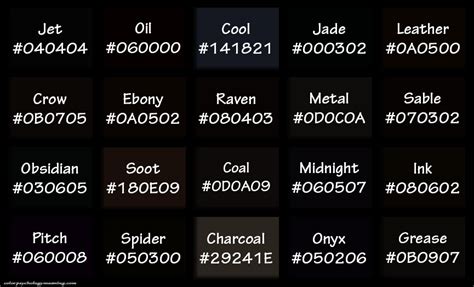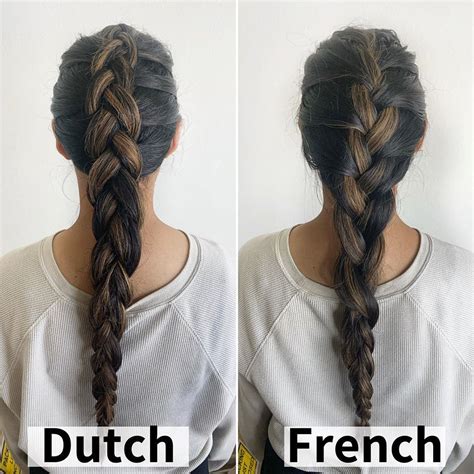Introduction
Braids are timeless hairstyles that have graced heads for centuries, with two prominent variations emerging as frontrunners: French braids and Dutch braids. Both boast intricate designs, but their techniques and aesthetics set them apart. This comprehensive guide delves into the battle between French and Dutch braids, comparing their advantages, disadvantages, and suitability for different occasions.

The 5-Point Comparison
1. Technique
- French braid: Weaves hair strands over one another in a forward direction, creating an intricate pattern that lies against the scalp.
- Dutch braid: Weaves hair strands under one another in a forward direction, resulting in a raised pattern that stands out from the scalp.
2. Appearance
- French braid: Flat and smooth, with a clean and polished look.
- Dutch braid: Voluminous and textured, with a more dramatic and eye-catching effect.
3. Hair Type
- French braid: Suitable for all hair types, including thin or fine hair.
- Dutch braid: More suitable for thick or medium-density hair, as it requires more hair to create a defined braid.
4. Hold
- French braid: Provides a secure hold that can last all day.
- Dutch braid: Offers a slightly less secure hold due to its raised pattern, which tends to loosen over time.
5. Occasions
- French braid: Versatile, suitable for both casual and formal occasions.
- Dutch braid: More suited for special events or occasions where you want to make a statement with your hair.
Advantages of French Braids
- Flattering for all face shapes.
- Easy to create, even for beginners.
- Provides a secure hold.
- Can be worn in a variety of styles, including buns, ponytails, and headbands.
Advantages of Dutch Braids
- Eye-catching and voluminous.
- Creates a fuller and thicker look.
- Adds texture to hair.
- Can be used to create intricate and creative hairstyles.
Disadvantages of French Braids
- Can be time-consuming to create.
- Not as suitable for thick or coarse hair.
- May cause hair breakage if not done correctly.
Disadvantages of Dutch Braids
- Less secure hold than French braids.
- Can be challenging to create, especially for beginners.
- Not as flattering for all face shapes.
Suitability for Different Occasions
Casual Occasions:
- French braid: Running, shopping, errands
- Dutch braid: Not recommended
Semi-Formal Occasions:
- French braid: Dinner dates, parties
- Dutch braid: Optional
Formal Occasions:
- French braid: Weddings, proms
- Dutch braid: More suitable
Strategies for Perfect Braids
1. Prepare your hair: Brush through your hair to remove any tangles or knots.
2. Divide your hair into sections: Decide on the number of braids you want and divide your hair into sections accordingly.
3. Secure the rest of your hair: Tie the unbound hair into a ponytail or bun to keep it out of the way.
4. Start braiding: Follow the technique for either French or Dutch braids.
5. Tighten and secure: Pull the braids as tight as you can without causing discomfort. Secure the ends with hair elastics.
Common Mistakes to Avoid
1. Braiding with dirty hair: Oily hair can make braids slip and loosen.
2. Braiding too tightly: This can cause hair breakage and headaches.
3. Not holding tension: If you don’t hold tension while braiding, the braids will come out loose and messy.
4. Not securing the braids properly: Use strong hair elastics and tie them off tightly to prevent the braids from unraveling.
FAQs
1. Which braid is best for my hair type?
- Thin or fine hair: French braid
- Thick or medium-density hair: Dutch braid
2. How long does it take to master braiding?
- With regular practice, you can master braiding in a few weeks.
3. Can I sleep with braids in my hair?
- Yes, braids can help protect your hair from tangles and damage while you sleep.
4. How often should I wash my hair if I wear braids?
- Every 2-3 days, depending on your hair type and the products you use.
5. Can I wear braids with extensions?
- Yes, but make sure the extensions are of the same texture and length as your natural hair.
6. How can I add creativity to my braids?
- Use different colors of hair extensions, add beads or hair accessories, or experiment with different braiding patterns.
Conclusion
The battle between French and Dutch braids is a matter of personal preference and the desired effect. French braids offer a sleek and polished look, while Dutch braids create a more voluminous and eye-catching style. Understanding the differences between these braids and the techniques involved will help you choose the perfect option for your hair type and occasion. With practice and creativity, you can master the art of braiding and enjoy stunning hairstyles for any occasion.
